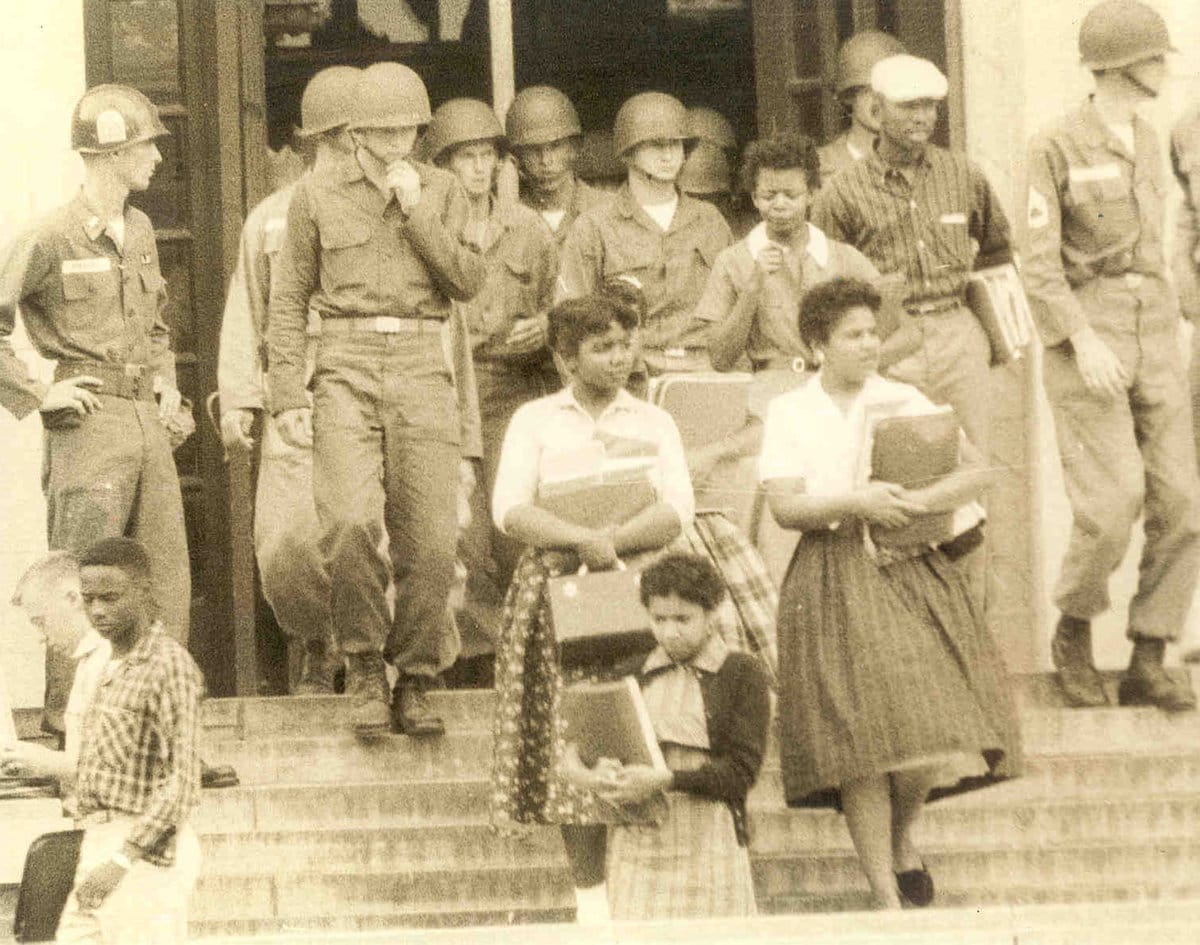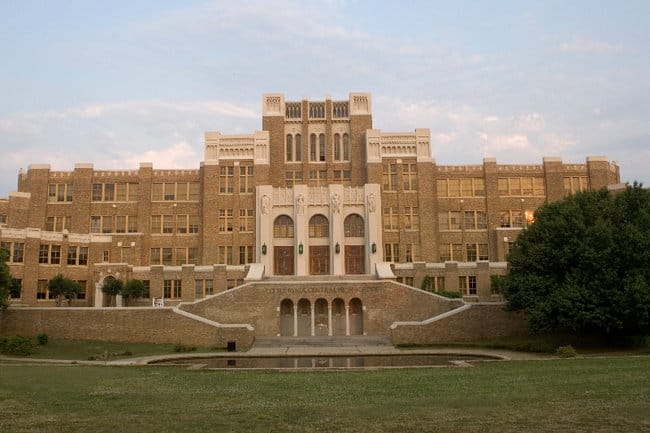

Uh oh...
It appears that you're using a severely outdated version of Safari on Windows. Many features won't work correctly, and functionality can't be guaranteed. Please try viewing this website in Edge, Mozilla, Chrome, or another modern browser. Sorry for any inconvenience this may have caused!
Read More about this safari issue.

The 1957 desegregation crisis at Little Rock Central High School was a pivotal marker in our country’s struggle for civil rights. Today, Little Rock Central High School National Historic Site provides education and interpretation about that struggle through personal stories of citizens pursuing justice and equality, as well as serves as the archive for photos, recordings and documents related to those events.

“The nine African-American students’ persistence in attending the formerly all-white Central High School was the most prominent national example of the implementation of the May 17, 1954 Supreme Court decision Brown v. Board of Education.” – National Park Service website
OnlyinArk recently spoke with Enimini Ekong, chief of interpretation and education at the Little Rock Central High School National Historic Site, about why this national park is so important.

How would you explain this national park in one sentence?
Little Rock Central High School NHS is a symbol of the most decisive test of American federalism in the 1950s, the catalyst for ending racially segregated schools in the United States, a cautionary tale of human capability, an inspirational narrative of intestinal fortitude, and a relevant question of access today.
Why is it important for us to know what happened in 1957? Is it relevant today?
1957 is important to know because understanding the linkages between past and present is absolutely basic for a good understanding of the condition of being human. It helps us as a society remain accountable to laws we create, the justice desired, the values and mores we deem universal, and the world we hand over to our children. Hence, all history, most notably 1957, is not only relevant; it is essential.
What are some interesting facts that people might not know about the Central High Crisis?
- At least 80% of instigation of the crisis came from citizens outside the city of Little Rock.
- Only 50-100 out of 1800 students were responsible for terrorizing the Nine.
- Initially, more than 200 black students volunteered to attend Central before being deterred through various strategies.
- Both whites and blacks were not in favor of integration.
- Black educators, by in large, were over-qualified to teach in most schools, but were often prevented from competing for jobs in the general marketplace.
- Full integration in Arkansas was not achieved until 1972.

Photo of Terrence Roberts being turned away
What lessons can people learn from visiting this park?
It is important for everyone to know this history because the challenge of 1957 still exists. While the Trojan horse of the day was called integration, critical examination would reveal that it was truly a question of access. Central High students of the 1950s received up-to-date everything (books, equipment, furniture, uniforms, etc.), so it was hard to say that any student graduating from such a high school would have a hard time matriculating to college or having opportunities to compete for jobs that require a strong academic foundation. On the other hand, most if not all Black schools received outdated resources, facilities, and extracurricular amenities as a standard. While the standard of excellence was not lower in the classroom or at home, the circumstances for blacks were less than optimal. Fast-forward to present day, regardless of school demographics, do all students today have the same access to quality education and opportunity?
This and many more lessons can be learned while visiting the park. We look forward to having you visit.
Little Rock Central High School National Historic Site Visitor Center is located at 2120 W Daisy L Gatson Bates Drive in Little Rock. It is open daily 9 a.m. – 4:30 p.m. Fee-Free Park.
Photos courtesy of National Park Service
Join the Conversation
Leave a Comment
2 responses to “Little Rock Central High School National Historic Site”
 Leave a Reply
Leave a Reply
We do the work.
You check your email.
Sign up for our weekly e-news.
Get stories sent straight to your inbox!










 Leave a Reply
Leave a Reply
[…] 1957 nine African-American students who became known as the Little Rock Nine enrolled in classes at Little Rock’s Central High School. Gov. Orval Faubus initially refused them entry into the school by deploying the Arkansas National […]
[…] of African American history in Arkansas, which began as early as 1721. Well-known sites like the Little Rock Central High School National Historic Site, Little Rock Nine “Testament” Statues, and the Mosaic Templars Cultural Center are locations […]